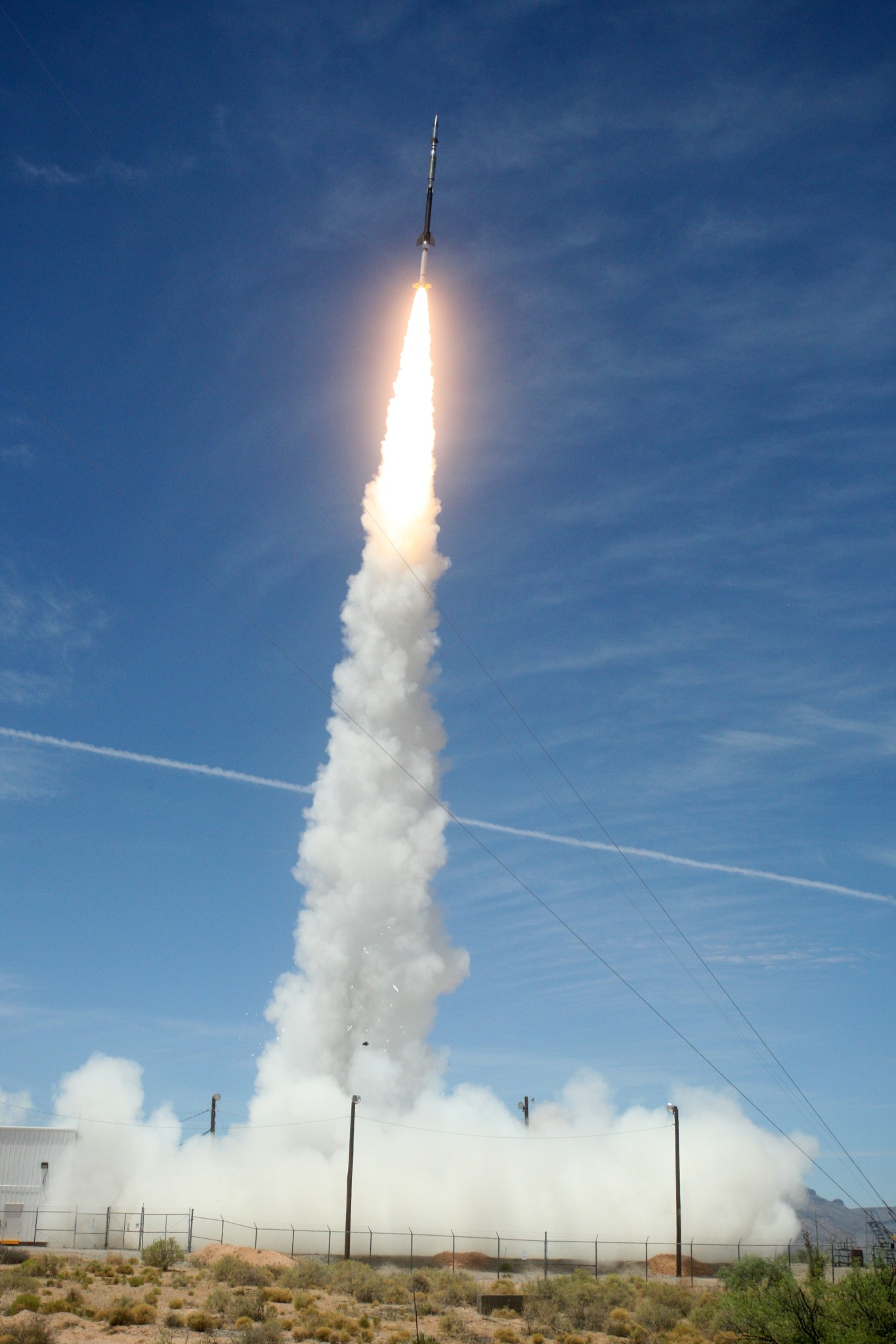NASA and its partners launched a rocket-borne camera to the edge of space at 2:54 p.m. EST May 29, 2018, on its third flight to study the Sun. The clarity of images returned is unprecedented and their analysis will provide scientists around the world with clues to one of the biggest questions in heliophysics – why the Sun’s atmosphere, or corona, is so much hotter than its surface.
The precision instrument, called the High Resolution Coronal Imager, or Hi-C for short, flew aboard a Black Brant IX sounding rocket at the White Sands Missile Range in New Mexico.
“This was the third launch of Hi-C,” said Amy Winebarger, principal investigator for the Hi-C mission at NASA’s Marshall Space Flight Center in Huntsville, Alabama. “Our second launch in 2016 had an issue with the camera on-board the telescope of the instrument. So, while we gathered critical engineering data and some images, we did not get the high-quality images of the corona we were expecting. We improved the camera from the last launch and are already getting exciting data from Tuesday’s experiment that could help explain the long-held questions about the Sun’s atmosphere.”
The telescope on Hi-C, the centerpiece of the payload weighing 464 pounds and measuring 10-feet long, is designed to observe a large, active region in the Sun’s corona in fine detail. The duration of the space portion of the Hi-C mission provided five minutes of observation time with the telescope acquiring an image about every five seconds.
Scientists anticipate that analysis of the imaging data from Hi-C’s third flight will help resolve current questions about connections between the hot and cool regions of the solar atmosphere. To meet this goal, Hi-C’s launch and data collection was coordinated with the Interface Region Imaging Spectrograph or IRIS for short, a NASA small explorer satellite observatory that captures images and spectra of the cooler portions of the sun’s atmosphere.
“This is the first combined simultaneous dataset that covers the entire solar atmosphere (photosphere, chromosphere, transition region and corona) at sub-arcsecond resolution,” said principal investigator for IRIS and Hi-C co-investigator, Dr. Bart De Pontieu from Lockheed Martin Solar & Astrophysics Laboratory in Palo Alto, California.
During its first flight in July 2012, Hi-C captured the highest-resolution images ever taken of the one and a half million-degree solar corona, revealing previously unseen magnetic activity. For decades, scientists have suspected that activity in the Sun’s magnetic field is heating the corona. The third flight of Hi-C captured images of comparable resolution in a different regime of extreme ultraviolet light, enabling more direct study of the interface between the hot corona and the cooler layers lower in the solar atmosphere.
“Understanding how the Sun works is important to everyday things we do on Earth,” said Winebarger. “Solar flares and eruptions can disrupt radio, GPS communications and satellites that disseminate cell phone signals. By studying how the Sun releases these bursts of energy, we hope to be able to better anticipate them and, in the future, design technology better equipped to withstand these disruptions.”
The Hi-C experiment is led by Marshall Space Flight Center in partnership with the Smithsonian Astrophysical Observatory in Cambridge, Massachusetts; Lockheed Martin Solar & Astrophysics Laboratory; and the University of Central Lancashire in Preston, UK. Launch support is provided by NASA’s Sounding Rocket Program at the agency’s Wallops Flight Facility on Wallops Island, Virginia, which is managed by NASA’s Goddard Space Flight Center Greenbelt, Maryland. NASA’s Heliophysics Division manages the sounding-rocket program for the agency. IRIS is a NASA small explorer mission developed and operated by Lockheed Martin Solar & Astrophysics Laboratory with mission operations executed at NASA Ames Research center and major contributions to downlink communications funded by the European Space Agency and the Norwegian Space Centre.
More about Hi-C:
https://www.nasa.gov/mission_pages/sunearth/news/HI-C.html
https://www.nasa.gov/topics/solarsystem/features/hic2013.html
More about sounding rockets:
More about NASA heliophysics research:



























